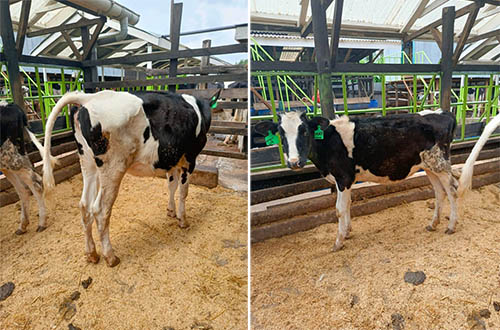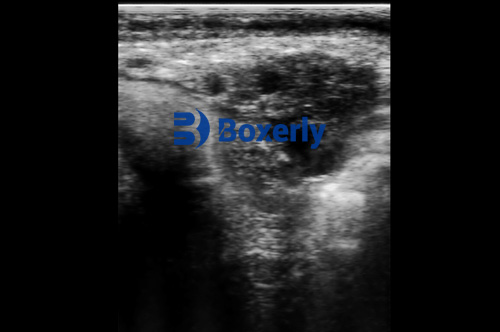When it comes to dairy farming, reproductive health is a cornerstone of productivity. One issue that often flies under the radar but can seriously impact milk yield and herd fertility is ovarian cysts in cows. These fluid-filled sacs disrupt normal ovulation cycles and can lead to longer calving intervals, reduced conception rates, and ultimately, financial losses. Luckily, modern technology is making it easier than ever to catch these problems early, with portable ultrasound devices playing a starring role on dairy farms around the world.

Why Ovarian Cysts Matter in Dairy Cattle
Ovarian cysts occur when a follicle on the ovary fails to ovulate and instead fills with fluid, sometimes growing quite large. Unlike a regular follicle that releases an egg during estrus, a cyst disrupts the cow’s hormonal balance. This often leads to irregular or absent estrous cycles, which means the cow isn’t cycling properly and won’t get pregnant as expected.
For dairy farmers, this translates to missed breeding opportunities and longer times between calving. Since a cow’s peak milk production usually occurs early in her lactation period, delayed conception cuts into overall productivity. Studies show that cystic ovarian disease can affect anywhere from 5% to 30% of lactating cows, depending on the herd and management factors. The economic impact can be significant, with extended calving intervals costing thousands in lost milk and additional insemination attempts.
Traditional Detection Methods and Their Limitations
Historically, identifying ovarian cysts relied on visual observation of estrous behavior and manual rectal palpation. While watching for signs like prolonged heat or irregular cycles is helpful, cows often don’t show clear symptoms, making detection hit-or-miss. Rectal palpation requires skill and experience, and even then, small cysts or early-stage problems may be missed. Plus, manual palpation can be stressful for the animal and the handler.
Blood tests measuring hormone levels can assist diagnosis but are costly, time-consuming, and not practical for on-farm routine screening. That’s where portable ultrasound devices come into play, offering a direct, real-time window into the cow’s ovaries without invasive procedures.
The Rise of Portable Ultrasound on Dairy Farms
In recent years, portable ultrasound technology has revolutionized how dairy farmers monitor reproductive health. Compact, battery-powered units like the BXL-V50 allow vets and farm technicians to perform on-site ovarian scans quickly and effectively. The device’s waterproof and dustproof design, along with easy-to-use controls for left- or right-handed operation, means it can withstand the rough-and-tumble farm environment while delivering high-resolution images.
Scanning takes just a few minutes per cow. The ultrasound probe is gently inserted into the rectum, where it sends sound waves to create a clear image of the ovary. Follicles, cysts, and other structures show up distinctly, allowing the operator to assess size, number, and type of cysts present. This immediate feedback enables faster, more accurate diagnoses and tailored treatment plans.

How Ultrasound Detects Ovarian Cysts
Ovarian cysts generally fall into two categories: follicular cysts and luteal cysts. Follicular cysts are thin-walled and usually larger than 25 mm, containing fluid but no solid tissue. Luteal cysts, on the other hand, have thicker walls due to the presence of luteal tissue, which affects hormone secretion differently.
With ultrasound, these distinctions are clear. A follicular cyst appears as a large, anechoic (dark) round structure with thin walls, while a luteal cyst shows more echogenic (brighter) wall thickness. This differentiation is critical because treatment varies: follicular cysts may respond well to hormone therapy that induces ovulation, while luteal cysts often require different hormonal approaches or even watchful waiting.
Benefits of Using Portable Ultrasound for Ovarian Cysts
Early and Accurate Diagnosis: Ultrasound allows detection of cysts before clinical signs appear, enabling early intervention and preventing prolonged infertility.
Non-Invasive and Stress-Free: Unlike some lab tests or repeated palpation, ultrasound is quick and minimally stressful for cows.
Cost-Effective: By catching cysts early, farmers save on expensive breeding delays and reduce the number of artificial inseminations needed.
Improved Herd Fertility: Monitoring ovarian health regularly helps maintain tight calving intervals and higher conception rates.
Decision-Making Support: Real-time images help veterinarians decide the best treatment path based on cyst type and cow condition.
Real-Life Impact: Portable Ultrasound Across Dairy Farms
Many dairy farms globally have adopted portable ultrasound as a routine part of their herd reproductive health programs. For instance, in farms across the U.S., New Zealand, and parts of Europe, vets use devices like the BXL-V50 to scan cows monthly during early lactation when ovarian cysts are most common.
Farmers report not only improved pregnancy rates but also reduced culling rates due to reproductive failures. The ability to scan on the spot eliminates delays caused by sending samples to labs or relying on less precise methods. The data collected also helps track herd reproductive trends, making it easier to spot management issues like nutrition deficits or stress factors contributing to cyst development.
Practical Tips for Farmers Using Portable Ultrasound
Timing is Key: The best time to check for ovarian cysts is during the postpartum period, especially between 30 and 60 days after calving when the reproductive tract is recovering.
Training Matters: Proper training for vets or farm staff ensures accurate interpretation of ultrasound images and reduces false positives or negatives.
Combine with Other Data: Ultrasound findings are most powerful when combined with records of heat detection, milk production, and body condition scores.
Follow-Up Scans: Rechecking cows after treatment helps confirm cyst resolution and normal ovulation return.
Maintain Equipment: Regular cleaning and calibration of the ultrasound unit keep images clear and reliable.
Challenges and Limitations
While portable ultrasound offers many advantages, it’s not without challenges. The initial cost of purchasing a good-quality device like the BXL-V50 can be a hurdle for small-scale farms. Also, image interpretation requires a learning curve, and misdiagnosis can happen if the operator is inexperienced.
Moreover, ultrasound detects structural abnormalities but does not directly measure hormonal status. Therefore, combining ultrasound with hormone assays or clinical signs gives the best diagnostic accuracy.
The Future of Portable Ultrasound in Dairy Reproductive Management
As technology advances, we’re seeing even more compact and user-friendly ultrasound machines entering the market. Integration with software for automated image analysis and herd health records could soon make ovarian cyst detection faster and less subjective.
Wireless probes that connect to smartphones or tablets are making the technology more accessible to farms worldwide. This means even in remote or resource-limited areas, dairy farmers can benefit from ultrasound’s power to improve reproductive efficiency.
Final Thoughts
Ovarian cysts in dairy cows are a silent productivity thief, but with portable ultrasound, farmers and vets have a potent tool to fight back. The ability to quickly, safely, and accurately identify cysts transforms herd management, improves conception rates, and boosts farm profitability.
Investing in reliable portable ultrasound devices and training personnel to use them pays dividends in the long run. It’s no wonder that more dairy farms are making ultrasound scanning a routine part of their reproductive health checks. After all, keeping cows cycling smoothly is fundamental to running a successful dairy operation.
tags:
Text link:https://www.bxlultrasound.com/ns/861.html


